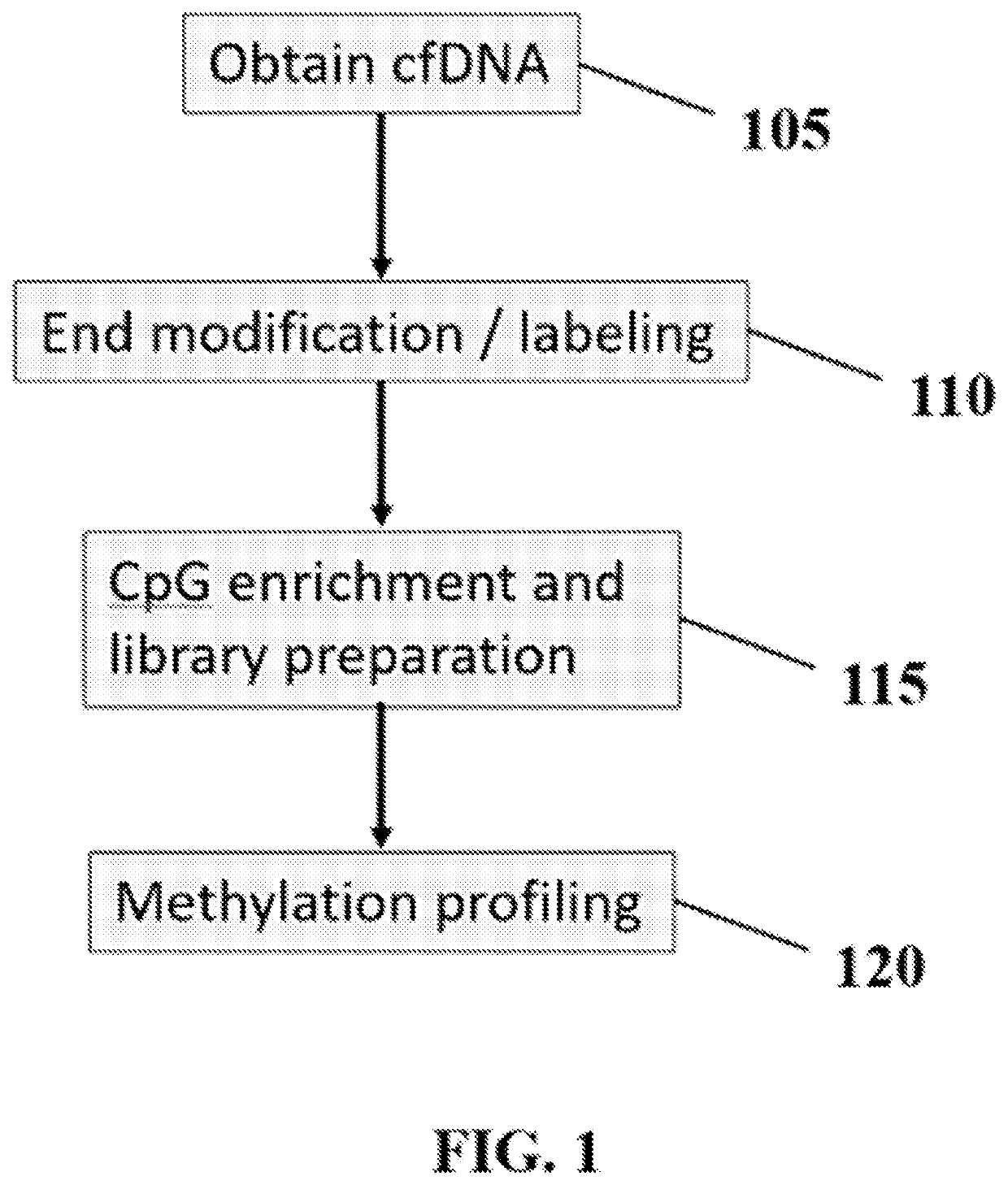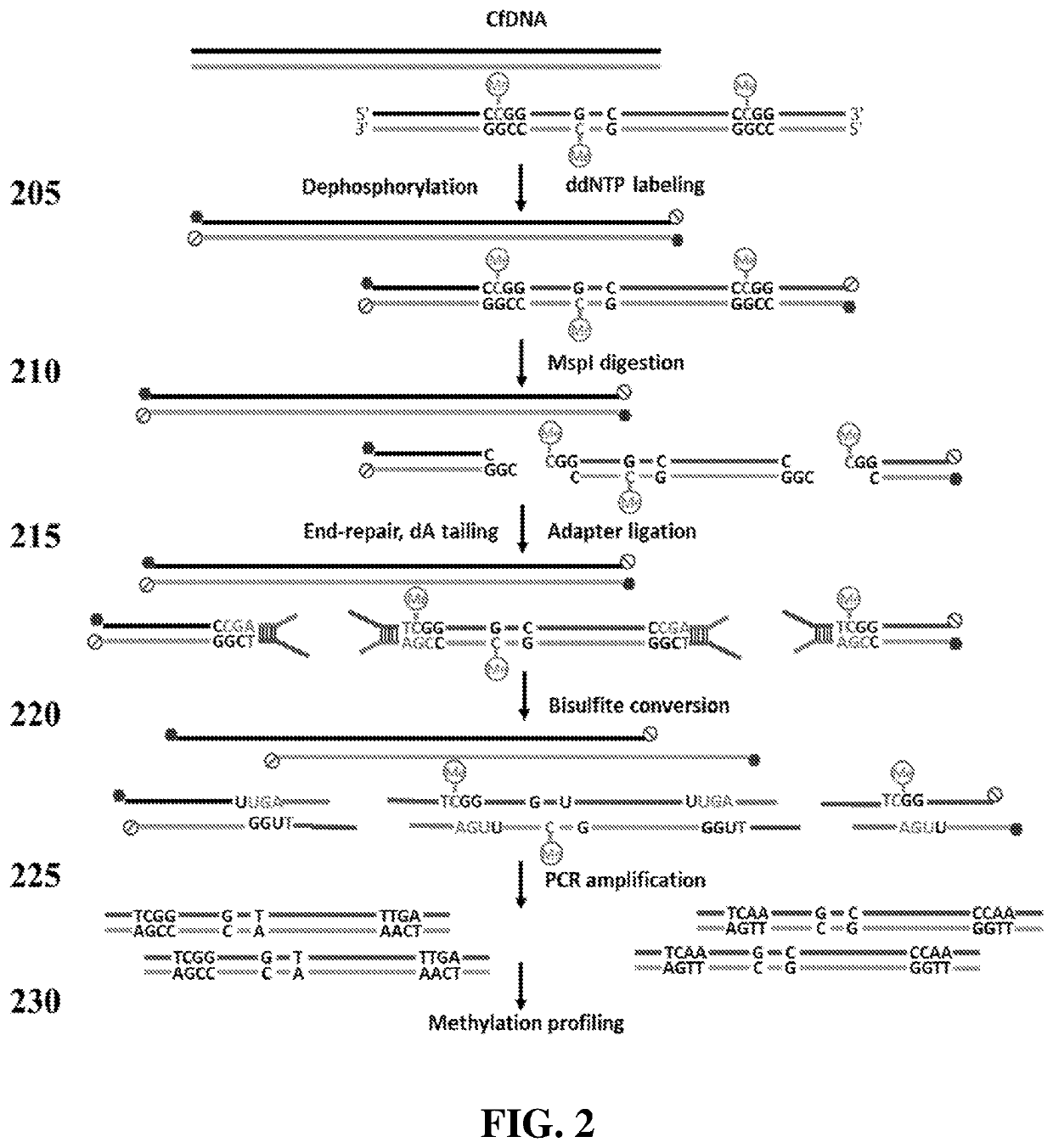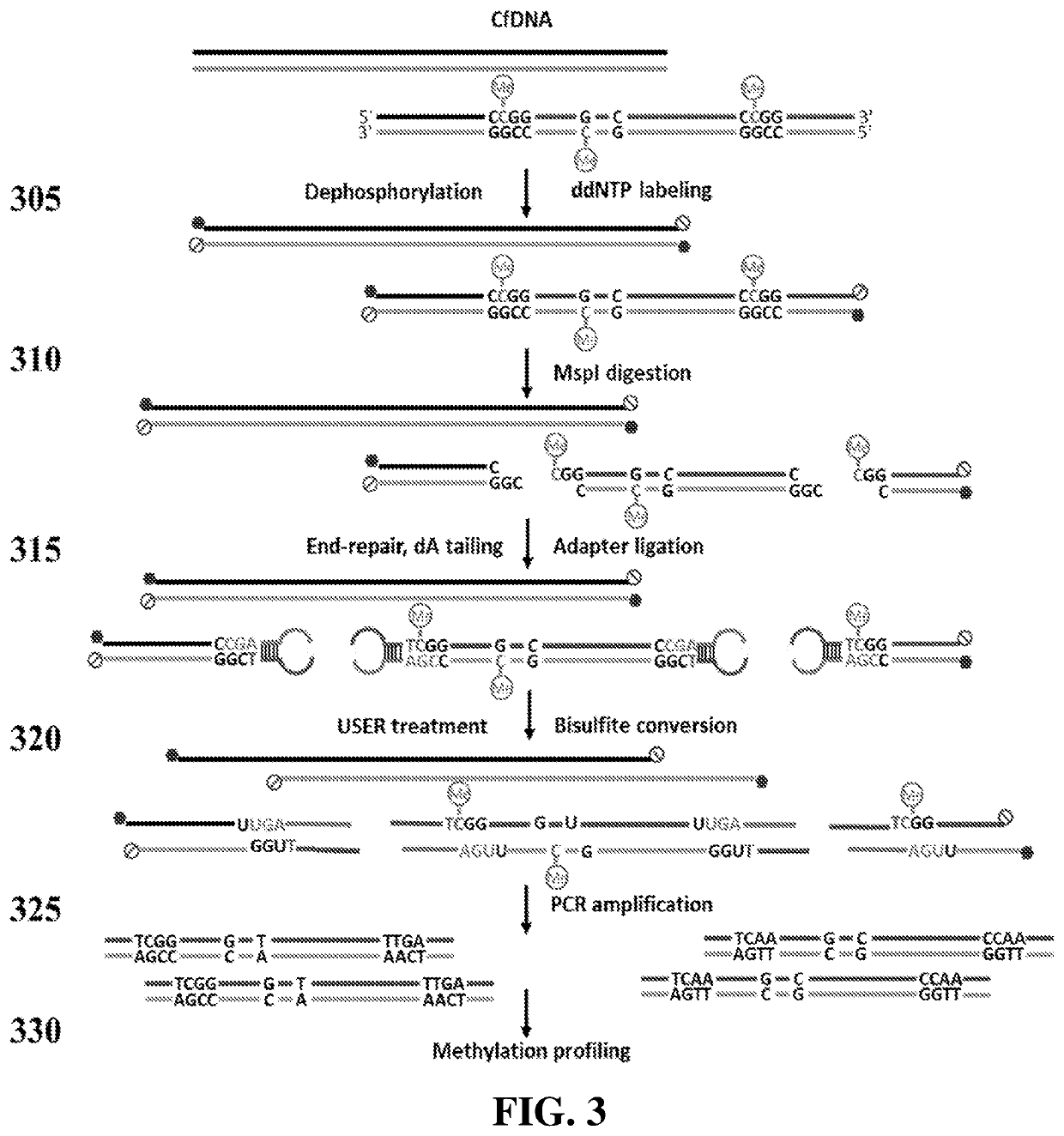Methods and systems for evaluating DNA methylation in cell-free DNA
a cell-free dna and methylation technology, applied in the field of cell-free dna methylation evaluation methods and systems, can solve the problems of not being true for cfdna and expensive to deep sequence the entire genome, and achieve the effects of reducing representation, high cpg, and efficient and high-throughpu
- Summary
- Abstract
- Description
- Claims
- Application Information
AI Technical Summary
Benefits of technology
Problems solved by technology
Method used
Image
Examples
example 2
Preparation of Reduced Representation Bisulfite Sequencing Libraries for Cell-Free DNA Methylation Profiling
[0185]As illustrated in FIG. 2, an example of a cfRRBS method may begin with dephosphorylating the input cfDNA molecules, such as by dephosphorylating 10 ng of input cfDNA with calf intestinal alkaline phosphatase (NEB), and then modifying the cfDNA molecules with a ddNTP moiety (for example, an “A,”“C,”“G,” or “T,” which may or may not be labeled), such as with 100 picomolar (pM) dideoxynucleotides (ddNTP) by 10 U terminal transferase (NEB).
[0186]Next, 10 U methylation insensitive restriction enzyme MspI (NEB) was used to digest the fragments at 37° C. for 15 h. Next, 5 U of Klenow fragment exo-(NEB) and a mixture of 1 mM dATP, 0.1 mM dGTP, and 0.1 mM dCTP were used for end repair and dA-tailing by incubating with DNA at 30° C. for 20 min, then 37 ° C. for 20 min. The dA-tailed DNA were then ligated with 500 nanomolar (nM) methylated stem-looped adapters by 30 Weiss U T4 DNA ...
PUM
| Property | Measurement | Unit |
|---|---|---|
| nucleic acid sequencing | aaaaa | aaaaa |
| nucleic acid | aaaaa | aaaaa |
| size | aaaaa | aaaaa |
Abstract
Description
Claims
Application Information
 Login to View More
Login to View More - R&D
- Intellectual Property
- Life Sciences
- Materials
- Tech Scout
- Unparalleled Data Quality
- Higher Quality Content
- 60% Fewer Hallucinations
Browse by: Latest US Patents, China's latest patents, Technical Efficacy Thesaurus, Application Domain, Technology Topic, Popular Technical Reports.
© 2025 PatSnap. All rights reserved.Legal|Privacy policy|Modern Slavery Act Transparency Statement|Sitemap|About US| Contact US: help@patsnap.com



